Possession of a Controlled Substance in Texas
Contents
Drug possession laws in Texas are strict and carry significant penalties for offenders. It is crucial to have a comprehensive understanding of these laws to ensure compliance and avoid any legal repercussions. Whether you are a resident of Texas or planning to visit the state, being aware of the drug possession laws can protect you from inadvertently breaking the law.
Navigating the intricacies of Texas drug possession laws can be overwhelming, which is why it is advisable to seek legal counsel if you find yourself facing drug possession charges. An experienced criminal attorney can guide you through the legal process, explain your rights, and work toward the best possible outcome for your case.
In the following sections of this guide, we will delve deeper into the specific penalty groups, associated penalties, and other relevant information to help you gain a comprehensive understanding of drug possession laws in Texas. It is crucial to be well informed to protect yourself and make informed decisions regarding drug possession.
Types of drugs and controlled substances in Texas
Texas has its own set of controlled substances that are classified under different penalty groups. These penalty groups determine the severity of punishment for possessing particular drugs. The classification is based on the potential for abuse, the potential for physical or psychological dependence, and any accepted medical use. Under Texas Health & Safety Code §§ 481.102 – 481.105, Texas law categorizes drugs into different penalty groups, each with its own set of penalties and consequences.
- PG1 – Penalty Group 1 includes drugs such as cocaine, heroin, methamphetamine, and ketamine. Possession of these substances can result in severe penalties, including hefty fines and lengthy prison sentences.
- PG1-A– LSD
- PG1-B – Fentanyl
- PG2 – Penalty Group 2 comprises drugs like ecstasy, mescaline, and hallucinogens. Possessing these substances can lead to significant legal repercussions, although the penalties may be slightly less severe than those associated with Penalty Group 1.
- PG-2A – Synthetic marijuana/cannabinoids
- PG3 – Penalty Group 3 includes drugs such as Xanax, Valium, and Ritalin. These substances are often prescription medications that, when possessed without a valid prescription, can still result in criminal charges and penalties.
- PG4 – Penalty Group 4 encompasses substances like codeine, morphine, and compounds containing limited quantities of narcotics. Possessing these substances without proper authorization can still lead to legal consequences, although the penalties may be comparatively less severe.
- Marijuana – Apart from the penalty groups, Texas law also classifies marijuana separately, distinguishing between possession of small amounts for personal use and possession with intent to distribute.
Drug Possession Charges in Texas
When it comes to drug possession Tex. Penal Code § 1.07(a)(39), Texas law categorizes charges into different levels based on the drug type and quantity of the controlled substance involved.
Possession of Controlled Substances
This charge (§ 481.1151) applies when an individual is found in possession of a controlled substance, such as marijuana, cocaine, methamphetamine, or prescription drugs without a valid prescription. The severity of the charge depends on factors such as the amount of the substance and the intended use.
Possession with Intent to Distribute
If the authorities have reason to believe that the individual had the intent to sell or distribute the controlled substance, the charge (481.112) can significantly escalate. Prosecutors may look for evidence like large quantities of drugs, packaging materials, scales, or text messages related to drug transactions to support this charge.
Possession of Drug Paraphernalia
In addition to the actual drugs, possessing drug paraphernalia (§ 481.125) can lead to separate charges. Drug paraphernalia includes items like pipes, syringes, bongs, or any other equipment primarily used for the consumption or preparation of drugs.
Possession of Controlled Substances in a Drug-Free Zone
The penalties for drug possession are often enhanced if the offense takes place within a certain distance of a designated drug-free zone (§ 481.134) , such as schools, parks, or community centers. In these cases, the charges can carry more severe consequences.
Enhancement for Injury or Death
The punishment for the delivery of a controlled substance that results in death or serious injury (§ 481.141) is increased by one degree unless either the offense is a first-degree felony or the maximum sentence for the crime is life imprisonment. This stipulation signals a heightened severity due to the gravity of harm inflicted and serves as a reminder of the potentially fatal consequences that can arise from drug-related activity. It stands as an example of the state’s commitment to protecting citizens from those who would put their lives at risk through the distribution of dangerous substances.
Enhancement for Crimes Involving Children
When a crime involves minors (§ 481.122), the offender faces stiffer penalties. If the perpetrator used someone under 18 to commit the offense, the crime is elevated by one degree―unless it is already a first-degree felony or punishable by life in prison. Similarly, if a minor was coerced into committing a crime through the use of threat or force, then the crime is automatically considered a first-degree felony―unless it is already classified as such, or carries a maximum sentence of life imprisonment. In any case, additional sanctions may apply when the crime includes delivery to a child. It is important to note that all these penalties are enforced to ensure the safety and security of children who have been subject to heinous crimes.
Which Drug Crimes are Federal under 21 U.S.C. 844?
Drug crimes that fall under the jurisdiction of the Drug Enforcement Agency (DEA) are those that occur on federal property, involve an undercover federal agent, or involve selling drugs to someone under 21 and/or within a school zone. These specific types of offenses may be prosecuted at the federal level due to their severity.
- Drug Trafficking: Drug trafficking is broadly defined as the sale, transport, or distribution of controlled substances. It’s typically considered a federal offense if the drugs involved in the transaction originate in another country or cross state lines. This includes transporting illegal drugs through an airport, state border, or even across international waters.
- Drug Manufacturing: Drug manufacturing is a common federal offense. This includes activities like growing, cultivating, or producing an illegal substance as well as other activities that facilitate its production. Additionally, those who supply materials to aid in the production process could be charged with a federal offense.
- Possession of a Controlled Substance: Possession of any type of controlled substance without permission from the government is a federal offense. This applies whether the substance is being held for personal use or if there is intent to distribute it to others.
- Drug Conspiracy: Engaging in a conspiracy to commit a drug crime is also a federal offense. This includes any agreement between two or more people to engage in unlawful activities related to drugs. For example, planning to transport, manufacture, or sell drugs would all qualify as a drug conspiracy and be punishable as a federal crime.
Drug trafficking, manufacturing, conspiracy, and possession of a controlled substance are all considered federal drug crimes, as they tend to cross state lines and affect more than one community.
POSS CS PG 1
Possession of a Controlled Substance Penalty Group 1
This refers to the offense of possessing a controlled substance listed in Penalty Group 1 of the Texas Health and Safety Code. Penalty Group 1 includes drugs such as:
- cocaine
- heroin
- methamphetamine
- and certain prescription opioids
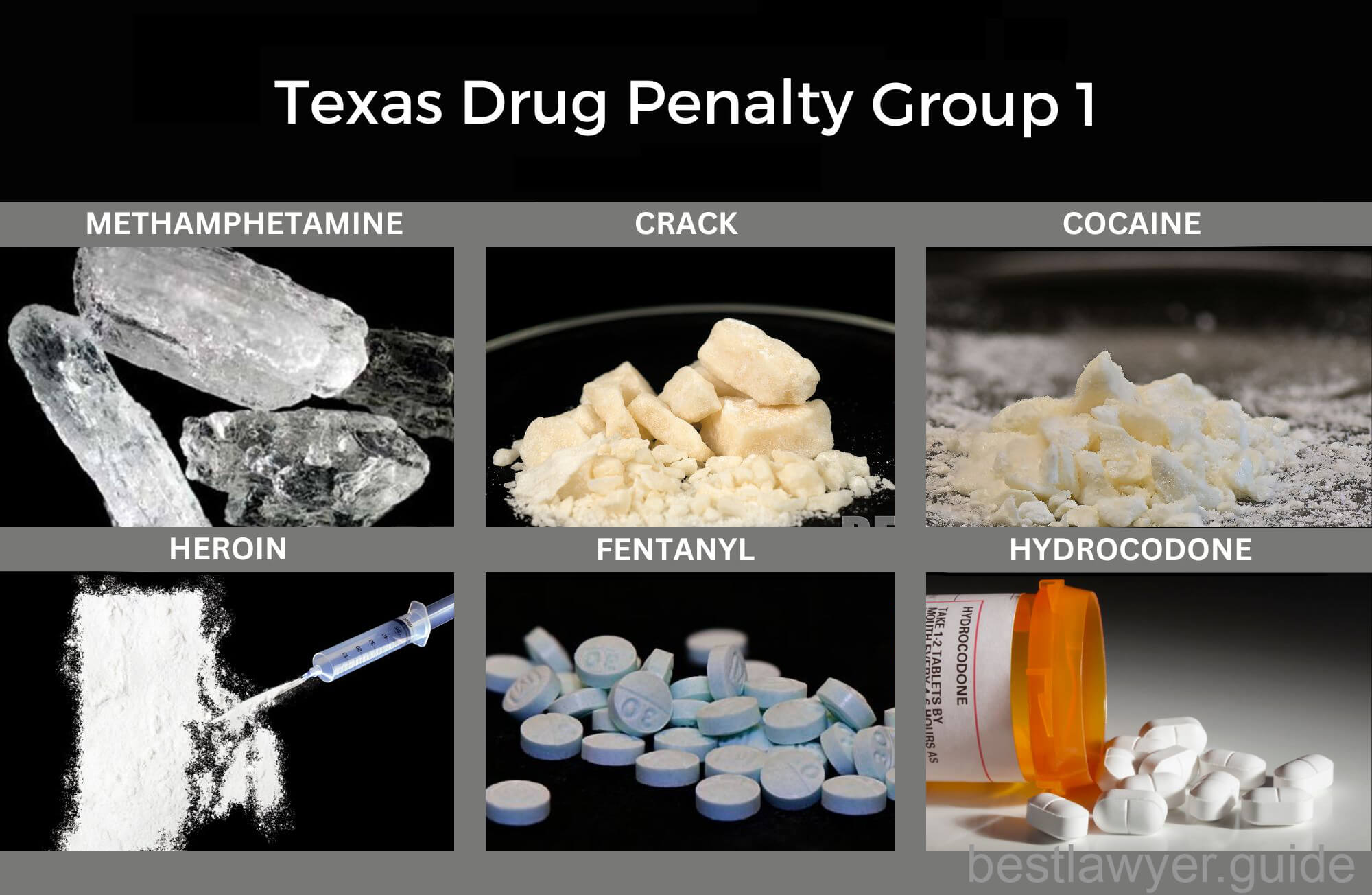
Penalty Group 1 of the Texas Controlled Substances Act encompasses a wide range of highly-dangerous drugs, including various opiates and opioids, cocaine, heroin, methamphetamine, morphine, oxycodone, flunitrazepam (Rohypnol), gamma-hydroxybutyric acid (GHB), and ketamine. In addition, “analogs,” or designer drugs that possess similar chemical properties to those listed above and produce similar effects, are also included within this penalty group. All of these substances are considered by the Texas government to have a high potential for abuse and are subject to the harshest possible penalties when found in possession or trafficking.
The penalties for possession of these substances vary depending on the amount possessed and other factors.
| Amount (by weight in grams) | Abbreviation | Classification | Penalty |
|---|---|---|---|
| Less than 1 Gram | POSS CS PG1 <1G | State Jail Felony | 180 days – 2 years in a state jail facility. Up to $10,000 fine |
| One to Four Grams | POSS CS PG1 1-4G | Third Degree Felony | 2 – 10 years in prison. Up to $10,000 fine |
| Four to 200 Grams | POSS CS PG1 4-200G | Second Degree Felony | 2 – 20 years in prison. Up to $10,000 fine |
| 200 to 400 Grams | POSS CS PG1 200-400G | First Degree Felony | 5 – 99 years in prison. Up to $100,000 fine |
| 400 Grams or More | POSS CS PG1 >400G | Enhanced First Degree Felony | 10 – 99 years in prison. Up to $100,000 fine |
POSS CS PG 1-A
Possession of a Controlled Substance Penalty Group 1-A
This refers to the offense of possessing a controlled substance listed in Penalty Group 1-A of the Texas Health and Safety Code. Penalty Group 1-A includes:
- LSD (lysergic acid diethylamide)
LSD stands alone in Penalty Group 1-A due to its unique characteristics. Unlike other controlled substances which are typically sold by weight, LSD is distributed per dose. As such, it is not grouped with any other drugs, making it the sole occupant of Penalty Group 1-A.
According to Section 481.1151 of the Texas Health and Safety Code, being caught with less than 20 units is a state jail felony. If 20 to 80 units are found, that constitutes a third-degree felony charge. Having 80 to 4,000 units leads to a second-degree felony, while possession of 4,000 to 8,000 units is considered a first-degree felony.
| Amount | Offense | Classification | Penalty |
|---|---|---|---|
| Less than 20 units | State Jail Felony | 180 days – 2 years | Up to $10,000 fine |
| 20 units or more | Third-degree Felony | 2 – 10 years | Up to $10,000 fine |
POSS CS PG 1-B
Possession of a Controlled Substance Penalty Group 1-B
Fentanyl is the sole controlled substance classified under Penalty Group 1-B. As one of the most dangerous and widely abused drugs on the market, it can have grave consequences for those who use or distribute it. Furthermore, its use carries a stiffer penalty than many other illicit substances, making it imperative that individuals understand the risks associated with this powerful opioid.
The penalties for possession of Penalty Group 1-B substances are also similar to those of Penalty Group 1.
POSS CS PG 2
Possession of a Controlled Substance Penalty Group 2
What Kind of Drug? This refers to the offense of possessing a controlled substance listed in Penalty Group 2 of the Texas Health and Safety Code. Penalty Group 2 includes drugs like:
- Ecstasy (MDMA)
- PCP (phencyclidine)
- Hashish
- and other hallucinogens
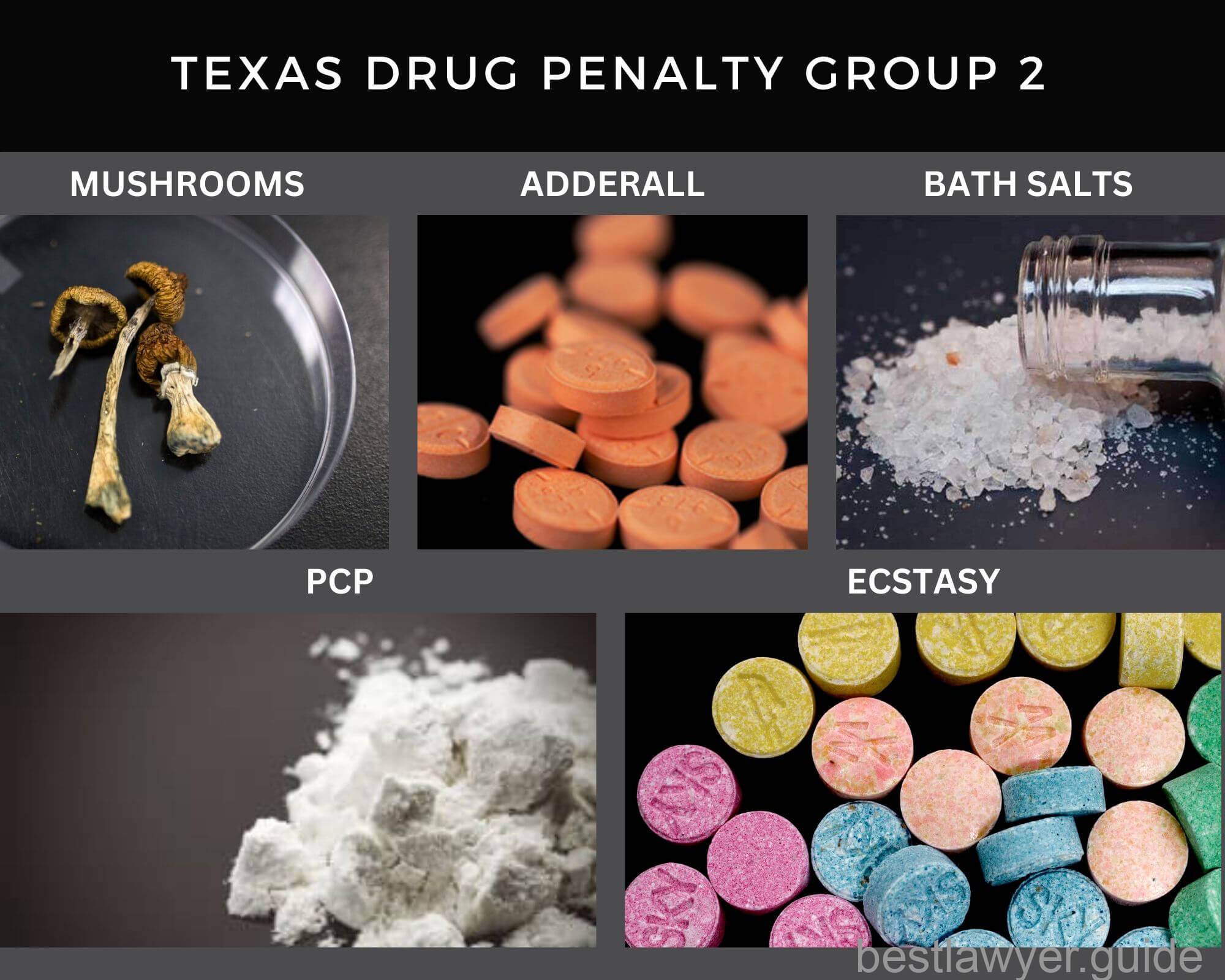
Controlled substances listed in Penalty Group 2 are broadly categorized into hallucinogens and stimulants. Examples of such substances include mescaline, psilocybin (mushrooms), tetrahydrocannabinol (THC) other than marijuana, and most amphetamines. Additionally, many drugs known as “analogs” have been developed to mimic the effects of certain substances classified within Penalty Group 2. These designer drugs present similar physiological effects as their counterparts, despite structural differences. As such, they too are regulated under Penalty Group 2.
| Amount (by weight in grams) | Abbreviation | Classification | Penalty |
|---|---|---|---|
| Less than 1 Gram | POSS CS PG2 <1G | State Jail Felony | 180 days – 2 years in a state jail facility. Up to $10,000 fine |
| One to Four Grams | POSS CS PG2 1-4G | Third Degree Felony | 2 – 10 years in prison. Up to $10,000 fine |
| Four to 400 Grams | POSS CS PG2 4-400G | Second Degree Felony | 2 – 20 years in prison. Up to $10,000 fine |
| 400 Grams or More | POSS CS PG2 >400G | First Degree Felony | 5 – 99 years in prison. Up to $50,000 fine |
Under the Texas Health and Safety Code Section 481.116, possession of less than one gram of a substance is categorized as a state jail felony. Individuals found with a minimum of one to four grams of that substance are faced with a third-degree felony offense, and those possessing four to 400 grams are charged with a second-degree felony. Possession of an amount greater than 400 grams is classified as a first-degree felony in the state of Texas.
POSS CS PG 2-A
Possession of a Controlled Substance Penalty Group 2-A
Synthetic cannabinoids, which are commonly referred to as “Spice” and K2 on the street, are included in drug penalty group 2-A. This group consists of a variety of specific chemical substances that activate cannabinoid receptors and mimic the effects of naturally occurring cannabinoids.
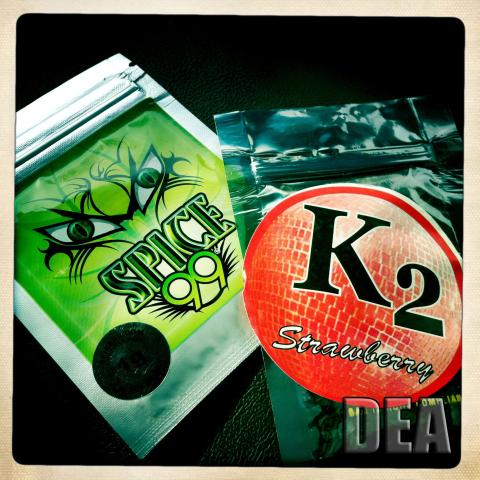
Penalties for possession of these substances vary from those that apply to delivering or manufacturing them. For large quantities, minimum sentences must usually be served. It is essential to remain well-informed about the laws governing synthetic cannabinoids, as ignorance is not an acceptable excuse when it comes to facing charges related to them.
POSS CS PG 3
Possession of a Controlled Substance Penalty Group 3
Penalty Group 3 encompasses a variety of controlled substances, including depressants like barbiturates. Drugs (commonly prescription medications) in this category include:
- Diazepam (Valium)
- Methylphenidate (Ritalin)
- Lorazepam (Ativan)
- Alprazolam (Xanax)
- Clonazepam (Rivotril), Pentobarbital
- Amobarbital
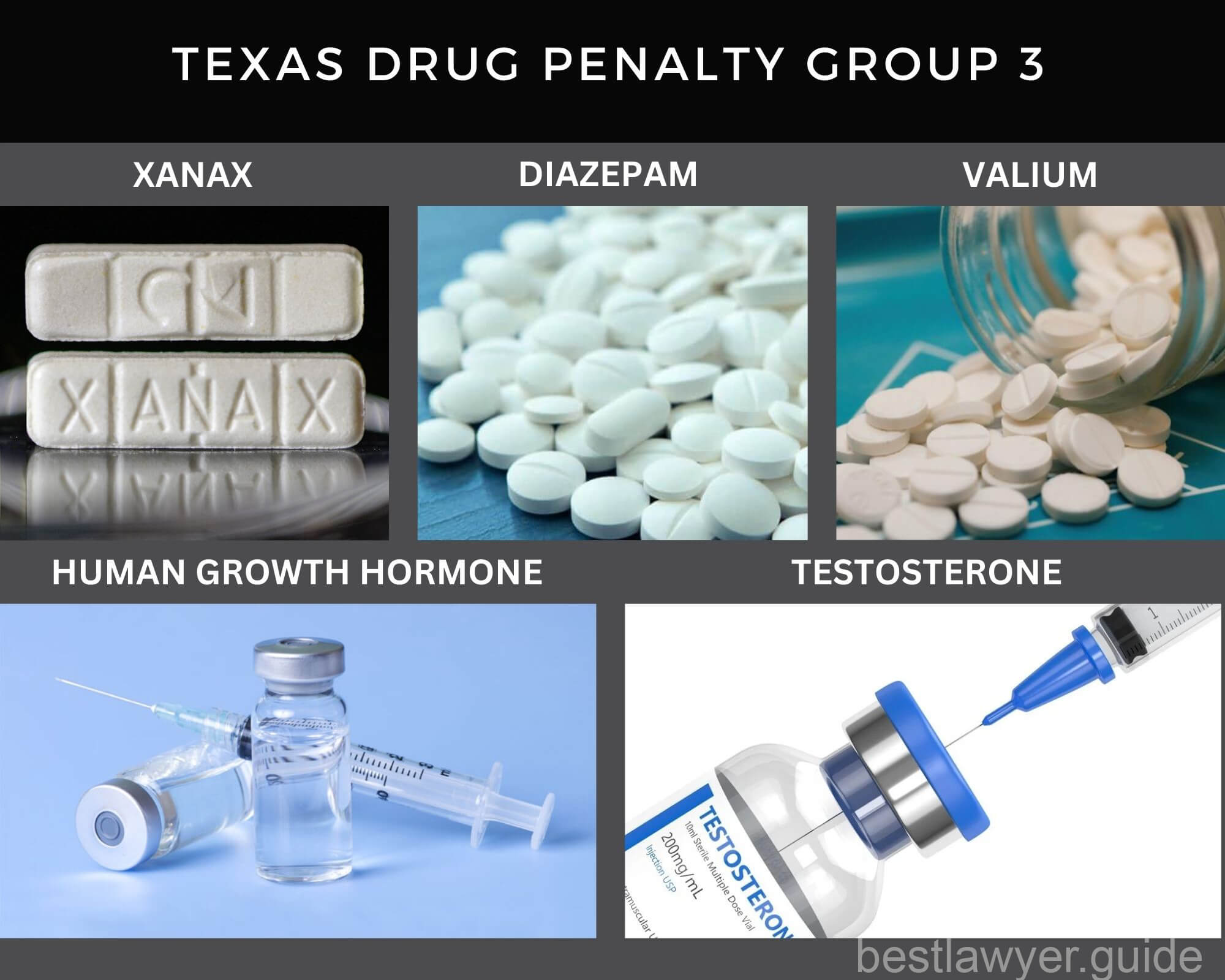
Other controlled substances such as :
- the hallucinogenic cactus Peyote
- and a variety of anabolic steroids are also in this grouping.
While these drugs all carry varying degrees of legal repercussions, they all generally produce sedative-like effects.
According to Section 481.117 of the criminal code, possession of Xanax and other group 3 controlled substances is treated as a criminal offense depending on the quantity involved. If found in possession of less than 28 grams of a group 3 substance, this is classified as a Class A misdemeanor, while possessing between 28 to 200 grams is considered a third-degree felony. Possessing up to 400 grams will be treated as a second-degree felony while having an amount of 400 grams or more is regarded as a first-degree felony.
| Amount (by weight in grams) | Abbreviation | Classification | Penalty |
|---|---|---|---|
| Less than 28 Gram | POSS CS PG3 <28G | Class A Misdemeanor | Up to 1 year in county jail. Up to $4,000 fine |
| 28 to 200 Grams | POSS CS PG3 28-200G | Third Degree Felony | 2 – 10 years in prison. Up to $10,000 fine |
| 200 to 400 Grams | POSS CS PG3 200-400G | Second Degree Felony | 2 – 20 years in prison. Up to $10,000 fine |
| 400 Grams or More | POSS CS PG3 >400G | First Degree Felony | 5 – 99 years in prison. Up to $50,000 fine |
POSS CS PG 4
Possession of a Controlled Substance Penalty Group 4
Possession of a controlled substance listed in Penalty Group 4 is subject to its own set of punishments. These substances are typically comprised of low-levity narcotics combined with other drugs, such as codeine found within Tylenol 3. Depending on the offense committed, partakers of these drugs may be subject to a variety of punishments that may increase or decrease in severity based on the amount of drug present during their transgression.
This category consists primarily of opiates and opioids not categorized in groups 1 or 3, as well as a variety of chemical compounds and prescription medications that can be abused. Section 481.118 specifies that the penalties for possession of these substances are equal to those punishable for having drugs listed in group 3. It is essential to note that even if narcotics in this classification were prescribed by a doctor, there are still severe consequences for possessing them without proper authorization.
DFZ
Drug-Free Zone
In Texas, if a drug offense (such as possession) occurs within a certain distance from places like schools, playgrounds, or daycare centers, it is considered to be in a “Drug-Free Zone.” Drug offenses committed in these areas can lead to enhanced penalties.
POMu2
Possession of Marijuana under 2 oz
This refers to the offense of possessing marijuana in an amount of under two ounces (56.7 grams). Texas has separate penalties for possessing small amounts of marijuana, which are typically less severe than those for other controlled substances.
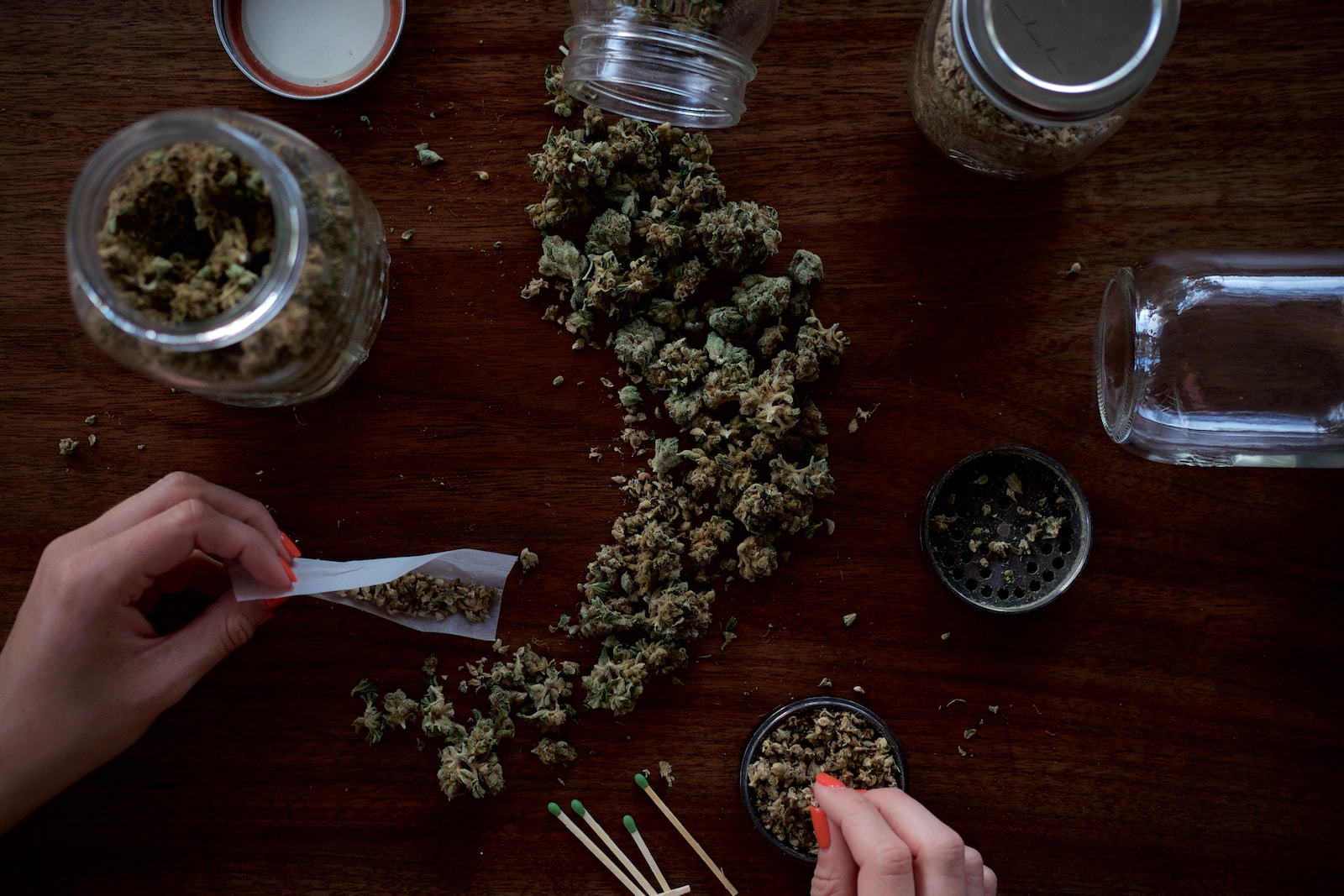
As per the Texas Health and Safety Code Section 481.121, possession of marijuana is considered unlawful and is subject to varying degrees of penalties depending on the amount acquired. If the individual is found in possession of less than 2 ounces of marijuana, they will be charged with a Class B misdemeanor.
Possession of between 2 and 4 ounces of marijuana will result in a Class A misdemeanor charge. Carrying 4 ounces to 5 pounds of marijuana constitutes a state jail felony while possessing 5 to 50 pounds of the substance is a 3rd-degree felony offense. Anyone found in possession of more than 50 pounds but less than 2,000 pounds of marijuana will be charged with a 2nd-degree felony, and anyone found with over 2,000 pounds of the drug will incur a 1st-degree felony.
First Marijuana DWI Offense (Class B Misdemeanor):
| Penalty | Consequence |
|---|---|
| Jail Time | Minimum 72 hours, Maximum 180 days in county jail |
| Fines | Up to $2,000 |
| Surcharge | $1,500 to $2,000 per year for 3 years |
| Driver’s License Suspension | Up to 1 year |
| Community Service | Mandatory 24 to 100 hours of community service |
Second Marijuana DWI Offense (Class A Misdemeanor):
| Penalty | Consequence |
|---|---|
| Jail Time | Minimum 72 hours, Maximum 1 year in county jail |
| Fines | Up to $4,000 |
| Surcharge | $1,500 to $2,000 per year for 3 years |
| Driver’s License Suspension | Minimum 180 days, Maximum 2 years |
| Community Service | Mandatory 80 to 200 hours of community service |
Penalties for Drug Possession in Texas
When it comes to drug possession in Texas, the penalties can be severe and vary depending on several factors. It is essential to have a clear understanding of the potential consequences to navigate the legal system effectively.
In Texas, drug possession penalties are determined based on the type and quantity of the controlled substance involved. The state classifies drugs into penalty groups, ranging from Group 1, which includes the most dangerous substances, to Group 4, which comprises drugs with a lower risk level.
For example, if you are found in possession of a controlled substance listed in Penalty Group 1, such as cocaine or heroin, you could face a state jail felony charge. This carries a penalty of up to two years in state jail and a fine of up to $10,000.
Possession of a controlled substance from Penalty Group 4, like a small amount of prescription medication, may result in a misdemeanor charge with a penalty of up to one year in county jail and a fine of up to $4,000.
Possessing more substantial quantities of drugs or being caught with drugs in designated drug-free zones, such as schools or playgrounds, can lead to enhanced penalties. These enhancements may result in longer prison sentences and higher fines.
Prior convictions can significantly impact the penalties imposed. Repeat offenses can escalate the charges from misdemeanors to felonies, carrying even more severe consequences.
Consult with a knowledgeable attorney if you find yourself facing drug possession charges in Texas. They can guide you through the legal process, help you understand the potential penalties, and develop a strong defense strategy tailored to your specific situation.




